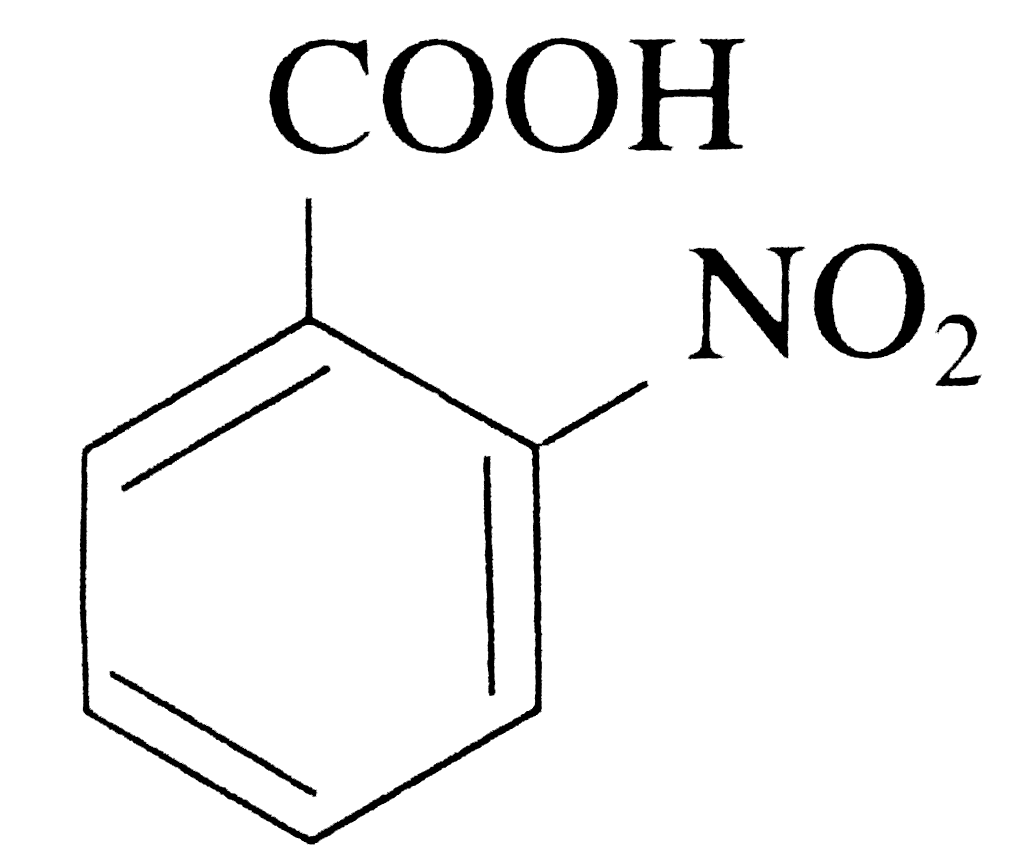The strongest acid from the following is




To determine the strongest acid among the given compounds, we need to analyze the substituents attached to the benzene ring and their effects on acidity. Here’s a step-by-step breakdown of the solution:
Step 1: Identify the Compounds
Let's assume the compounds are:
1. Compound 1: Benzene with -OH (Phenol)
2. Compound 2: Benzene with -Cl (Chlorophenol)
3. Compound 3: Benzene with -NO2 (Nitrophenol)
4. Compound 4: Benzene with -CH3 (Methoxyphenol)
Step 2: Understand the Effects of Substituents
- -OH (Hydroxyl group): This is the functional group that makes the compound acidic (phenol).
- -Cl (Chloro group): This is a -I (inductive effect) group, which pulls electron density away from the ring, increasing acidity.
- -NO2 (Nitro group): This is a strong -I (inductive effect) and -M (mesomeric effect) group, which significantly increases acidity due to its strong electron-withdrawing nature.
- -CH3 (Methyl group): This is a +I (inductive effect) group, which donates electron density to the ring, decreasing acidity.
Step 3: Analyze the Effects on Acidity
- The presence of electron-withdrawing groups (like -Cl and -NO2) increases acidity because they stabilize the negative charge on the conjugate base formed after deprotonation.
- The -NO2 group is stronger than -Cl due to its stronger electron-withdrawing effects.
- The -CH3 group, being electron-donating, will decrease acidity.
Step 4: Determine the Order of Acidity
Based on the effects of the substituents:
1. Nitrophenol (Compound 3): Strongest acid due to -NO2 (strong -I and -M effect).
2. Chlorophenol (Compound 2): Second strongest acid due to -Cl (weak -I effect).
3. Phenol (Compound 1): Weaker than chlorophenol due to no electron-withdrawing substituents.
4. Methoxyphenol (Compound 4): Weakest acid due to -CH3 (electron-donating +I effect).
Conclusion
The strongest acid among the given compounds is Compound 3 (Nitrophenol).
---
Let's assume the compounds are:
1. Compound 1: Benzene with -OH (Phenol)
2. Compound 2: Benzene with -Cl (Chlorophenol)
3. Compound 3: Benzene with -NO2 (Nitrophenol)
4. Compound 4: Benzene with -CH3 (Methoxyphenol)
- -OH (Hydroxyl group): This is the functional group that makes the compound acidic (phenol).
- -Cl (Chloro group): This is a -I (inductive effect) group, which pulls electron density away from the ring, increasing acidity.
- -NO2 (Nitro group): This is a strong -I (inductive effect) and -M (mesomeric effect) group, which significantly increases acidity due to its strong electron-withdrawing nature.
- -CH3 (Methyl group): This is a +I (inductive effect) group, which donates electron density to the ring, decreasing acidity.
- The presence of electron-withdrawing groups (like -Cl and -NO2) increases acidity because they stabilize the negative charge on the conjugate base formed after deprotonation.
- The -NO2 group is stronger than -Cl due to its stronger electron-withdrawing effects.
- The -CH3 group, being electron-donating, will decrease acidity.
Based on the effects of the substituents:
1. Nitrophenol (Compound 3): Strongest acid due to -NO2 (strong -I and -M effect).
2. Chlorophenol (Compound 2): Second strongest acid due to -Cl (weak -I effect).
3. Phenol (Compound 1): Weaker than chlorophenol due to no electron-withdrawing substituents.
4. Methoxyphenol (Compound 4): Weakest acid due to -CH3 (electron-donating +I effect).
The strongest acid among the given compounds is Compound 3 (Nitrophenol).
Topper's Solved these Questions
Similar Questions
Knowledge Check
- Question 1 - Select One
Select the pKa value of the strongest acid from the following :
A1.0B3.0C2.0D4.5 - Question 2 - Select One
Select the pKa value of the strongest acid from the following
A1.0B3.0C2.0D4.5 - Question 3 - Select One or More
The strongest acid among the following is
A B
B C
C D
D

